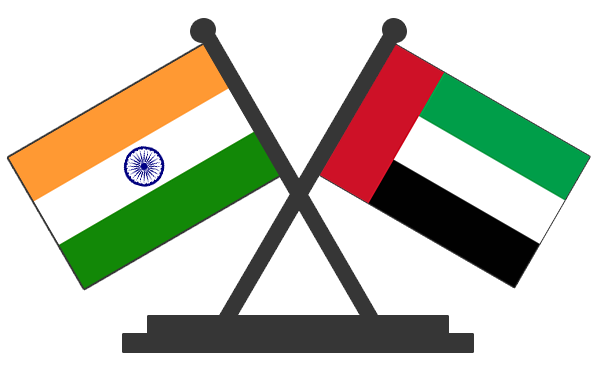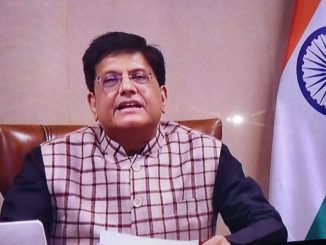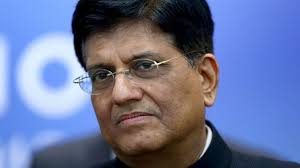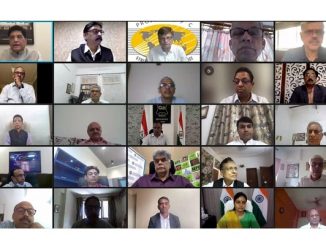
Sep 22: Shri Piyush Goyal, India’s Minister of Commerce and Industry, Consumer Affairs, Food, and Public Distribution and Textiles, and H.E. Dr. Thani bin Ahmed Al Zeyoudi, United Arab Emirates Minister of State for Foreign Trade, have formally launched negotiations on the India-United Arab Emirates Comprehensive Economic Partnership Agreement (CEPA).
H.E. Dr. Thani bin Ahmed Al Zeyoudi and a high-level UAE delegation have travelled to New Delhi to hold talks aimed at improving bilateral economic relations, including expanding the existing trade and investment relationship. The first round of CEPA negotiations will be held on 23-24 September 2021.
Looking to build on the progress made by both countries under the Comprehensive Strategic Partnership signed in 2017; both Ministers expressed a desire to reach a mutually beneficial economic deal. Both sides will aim to conclude negotiations by December 2021 and sign a formal agreement in March 2022 after the completion of internal legal procedures and ratification.
Both Ministers emphasized that CEPA will create new jobs, raise living standards, and provide wider social and economic opportunities in both nations. A new strategic economic agreement is expected to increase bilateral trade in goods to USD 100 billion within five years of the signed agreement and increase trade in services to USD 15 billion.
The UAE is currently India’s third-largest trading partner with bilateral trade in 2019/2020 valued at USD 59 billion. The UAE is also India’s second-largest export destination after the US, with exports valued at approximately USD 29 billion in 2019-2020. India was the UAE’s second-largest trading partner in 2019, with bilateral non-oil trade valued at USD 41 billion. The UAE is the eighth-largest investor in India, having invested USD 11 billion between April 2000 and March 2021, while investment by Indian companies in the UAE is estimated to be over USD 85 billion.
India’s major exports to the UAE include petroleum products, precious metals, stones, gems and jewellery, minerals, food items such as cereals, sugar, fruits and vegetables, tea, meat, and seafood, textiles, engineering and machinery products, and chemicals. India’s top imports from the UAE include petroleum and petroleum products, precious metals, stones, gems and jewellery, minerals, chemicals and wood and wood products. India imported USD 10.9 billion of crude oil from the UAE in 2019-2020.
During the meeting in New Delhi, H.E. Goyal extended his deepest appreciation to the UAE for its support during the COVID-19 pandemic, especially for supplying liquid medical oxygen and medicine. For his part, H.E. Al Zeyoudi also thanked the Government of India for its support during the pandemic, which included keeping supply chains open.
Reaffirming their commitment to working together, both Ministers agreed to strengthen the rules-based, transparent, non-discriminatory, open, and inclusive multilateral trading system embodied by the World Trade Organization. They also agreed to work towards a balanced and inclusive outcome at the 12th WTO Ministerial Conference (MC12) in Geneva, Switzerland.
H.E. Goyal conveyed India’s best wishes for Expo 2020 Dubai, which begins on 1 October 2021, and expressed confidence that India’s participation will help boost bilateral trade and investment. He also confirmed he will co-chair the ninth UAE-India High Level Joint Task Force on Investments with His Highness Sheikh Hamed bin Zayed Al Nahyan, Member of the Abu Dhabi Executive Council.
Both Ministers underlined the need to coordinate and promote cooperation under the framework of the memorandum of understanding signed in January 2017 between the two countries for cooperation on trade remedy measures. As envisaged in that agreement, both countries will identify clear areas of focus and establish ways of working together to resolve trade remedy cases.
Both Ministers emphasized that concluding CEPA negotiations quickly and constructively will further strengthen the deep trade and economic ties between both countries.
Disclaimer: We donot claim that the images used as part of the news published are always owned by us. From time to time, we use images sourced as part of news or any related images or representations. Kindly take a look at our image usage policy on how we select the image that are used as part of the news.


